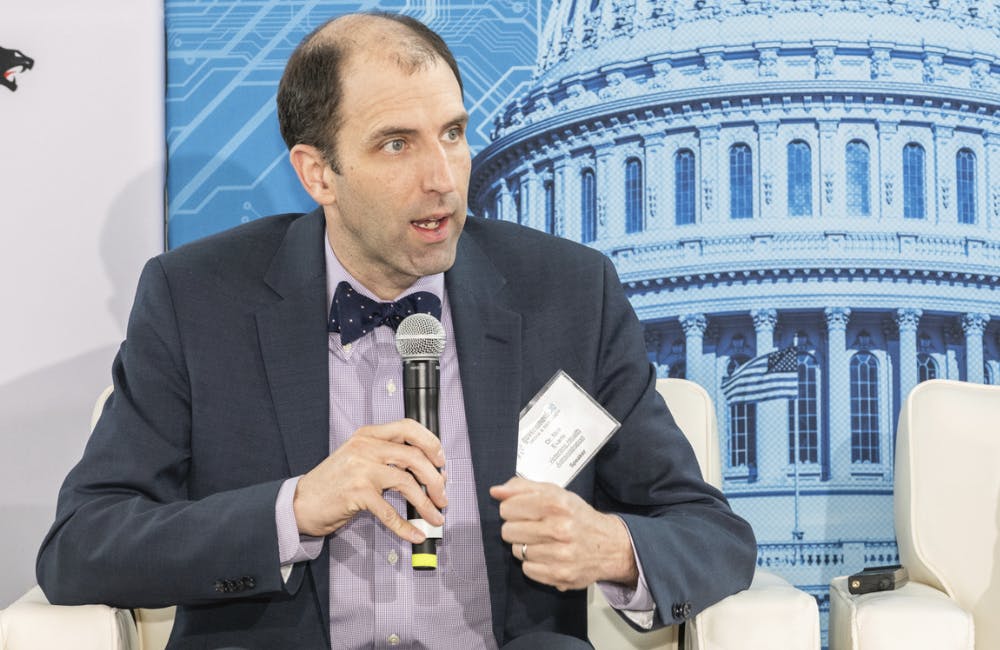HHS, CMS on Data, Human-Centered Design in Agile Acquisition
Government leaders touch on industry best practices in acquisition, such as agile methodology, data transparency and human-centered design.

Agencies are using emerging technology and agile practices to deliver transparency and support critical agency missions, according to leaders from the Department of Health and Human Services and the Centers for Medicare & Medicaid Services. Acquisition Innovation CXO Tech Forum June 20.
For HHS Chief Technology Officer for the Division of Acquisition Oki Mek, some of those efforts are solving the agency’s business needs.
“All administrative systems should really be communicating with one another to support the mission,” Mek said during a panel at the Acquisition Innovation CXO Tech Forum June 20. This includes fostering data transparency, which aligns with the IT modernization efforts outlined by the President’s Management Agenda.
The agency is working with blockchain technology (it became the first agency to receive federal authority to operate in December) to assist its acquisition process, Mek added. As part of the BuySmarter initiative and HHS Accelerate, which also incorporates machine learning and robotic process automation, the blockchain system supports standardization of acquisition data throughout HHS and its related agencies like CMS. This provides more price visibility and transparency to reduce unnecessary costs and help purchasers make better decisions, Mek said.
Dubbed the “Turbotax Model,” Mek compared the progression of how people switched from paper-based tax filing to electronic methods for quicker, more efficient results because data became aggregated and analysis improved as technology advanced. “That’s what we’re trying to do in terms of the acquisition,” he said. “It’s the future of how you modernize and run IT.”
Another common challenge among federal agencies is when a product or service is purchased without a clear action plan, said Todd Simpson, chief product officer at HHS.
“I’ve walked into situations and into roles where I found a bunch of software that had been sitting on the shelf, not installed,” Simpson explained. “It was purchased because someone thought it would be a good addition to the toolbox, but it was bought without a strategy or integration partner to install it.”
Having a central place to identify what exists and who owns which resources would greatly improve cost efficiency and transparency for customers, Simpson said. Currently, Simpson and his team are working on establishing an administrative data hub — which will house HHS Accelerate procurement data along with other data sets — to not only bridge communication disconnects between customers, but also to build overall better community practices around the products being delivered, he said.
Though data is on a path toward centralization, decision-making remains largely decentralized due to different standards and requirements agencies have when making purchases, Mek explained. Aside from faster acquisition through advanced technology and data, human-centered design — a process of understanding the people served through their needs, wants and behaviors — is one method agencies like HHS use to focus on users and get back on track with what the agency is truly trying to accomplish.
HHS uses agile acquisition strategies pushed by the Office of Management and Budget, such as two-week sprints and the idea of “failing fast,” but the agency is also implementing human-centered design “to understand pain points, [and] create engagement and collaboration between agencies,” he said.
Leading the effort to modernize Medicare beneficiary claims payment systems, Mishu Tasnim, U.S. Digital Services expert at CMS, highlighted the fact that many people need to collaborate and agree before the payment of a claim is ultimately fulfilled.
“The first thing we ask our stakeholders is, ‘Who is the user?’ before we even take that product out of the backlog,” she said. “This is not a software problem; software happens to solve the problem,” and clarified that agencies are addressing human problems.
Measuring the success of how agencies address those problems are based on whether they are able to secure their mission objective, as chief experience officer at Mad*Pow Amy Heyman noted. One method Mad*Pow uses to spur acquisition innovation is through answering the prompt, “How might we?”
Mad*Pow partnered with HHS to answer, “How might we make medical bills easier to understand for people,” in terms of the financial aspect of health and better preparedness for unexpected expenses. They administered a design challenge and 80 teams came back with “fantastic ideas” and served as an example for other health systems to acquire innovative ideas quickly.
The other panelists also agreed that embracing collaboration through adopting a product mindset, identifying what the objective is and understanding who the users are is critical when purchasing products and services effectively.
The panelists emphasized the importance of continued collaboration between the private sector to acquire innovative services. “We have a lot of ground to cover to get things right,” Simpson said, in closing. “Continue to partner with us, and look for the RFPs … because there’s lots of business hitting the streets.”
This is a carousel with manually rotating slides. Use Next and Previous buttons to navigate or jump to a slide with the slide dots
-

New Year, New Administration: What's Next for VA in 2025
VA sets its sights on modernizing its EHR, advancing interoperability and adopting emerging tech amid the presidential transition.
4m read -

HHS Accelerates AI, TEFCA in 2024
Micky Tripathi, tech policy and health IT leader, reflects on progress HHS has made with AI, data and TEFCA and outlines plans for 2025.
-

VA Focuses on Continuous Improvement for 2026 EHR Rollout
VA plans to resume rollout of its EHR in FY 25, focusing recent feedback to drive continuous improvement amid the presidential transition.
4m read -

Navigating Federal Zero Trust Development
Federal leaders from the Interior Department and CyberArk discuss their zero trust progress and what lies ahead amid shifting priorities.
26m watch







